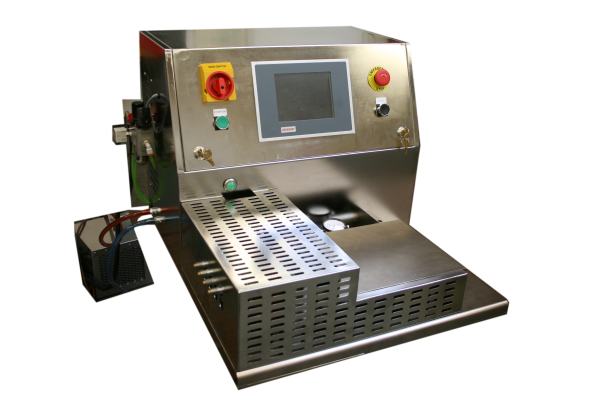Catheter tipping, a crucial stage in the manufacturing of medical devices, entails molding the distal or proximal end of the catheter to meet specific requirements. The dominant methods in this process are Heat Tipping and RF (Radio Frequency) Tipping. Both methods involve using a mold to shape the catheter tip, which is then heated to melt the material. With the assistance of a mechanism, the material is inserted into the mold to achieve the desired final shape as the mold heats and cools. This comprehensive article focuses on each method, providing a detailed exploration of their precision, material compatibility, production speed, cost implications, and safety considerations.
Before diving into the comparative analysis, it's essential to understand the fundamental principles of the two catheter tipping methods.
Heat Tipping Method
Heat tipping involves applying controlled heat to the distal end of the catheter using a metal or glass mold, which allows the material to soften and take on the desired shape. Over the years, various intriguing methods have been employed to heat the molds. For instance, some molds were submerged in solder pots, where they remained until the plastic melted and conformed to the desired shape. In another method, a heated copper block would clamp the mold until the temperature reached the optimum level for material melting. Glass molds, on the other hand, were heated using a hot air gun to achieve the desired plastic melting and shaping. This traditional technique heavily relies on proper temperature control and skilled craftsmanship to achieve somewhat accurate results. However, even the slightest change in the environmental conditions would significantly impact the reliability of the process.
RF (Radio Frequency) Tipping Method
In contrast, the RF tipping method utilizes the power of radio frequency energy to heat the tip-forming molds and shape the distal end of the catheter. This advanced technique involves wrapping a coil around a metallic mold, which induces current, on the mold within the covered section of the coil. As the mold heats up, a thermocouple welded onto the mold monitors the temperature and controls the forming process, by altering the RF energy as needed. By employing specialized ONEX RF catheter tipping machines, this method ensures a highly automated and precise approach, guaranteeing consistent and uniform results.
Comparative Analysis
Precision and Control
In the realm of precision and control, the heat tipping method relies heavily on the expertise of operators, introducing a human element that can lead to subtle variations. Skilled craftsmen can achieve impressive precision, but meticulous attention to temperature and timing is essential for consistency. On the other hand, the RF tipping method stands out for its automated approach, providing unparalleled precision and control. The use of specialized ONEX RF catheter tipping machines ensures a standardized and reproducible process, minimizing the impact of human factors and delivering consistently precise catheter tips.
Material Compatibility
When it comes to compatibility with different catheter materials, the heat tipping method showcases its versatility across a wide range of materials. However, it may face challenges when dealing with heat-sensitive substances, requiring precise temperature control and heating zone management. On the other hand, the RF tipping method excels with its exceptional accuracy and precise heat zone control. Whether working with traditional materials or heat-sensitive ones, RF technology offers flexibility in catheter design and material selection, making it the preferred choice for diverse manufacturing needs.
Production Speed and Efficiency
In terms of production speed and efficiency, the heat tipping method, being more reliant on manual processes and skilled operators, may experience slower production rates. The intricacies of temperature control and craftsmanship contribute to a methodical yet time-consuming approach. Conversely, the RF tipping method excels in both speed and efficiency. The automated nature of RF tipping machines enables rapid catheter tip formation, making it a preferred choice for high-volume production where time is a critical factor.
Cost Implications
Analyzing cost implications, the heat tipping method introduces variable costs associated with equipment maintenance, and skilled labor, as experienced operators are crucial for achieving precision. Additionally, the need for precision equipment adds to the overall expenses. In contrast, the RF tipping method, while involving a higher initial investment in specialized machines, often proves more cost-effective in the long run. The reduced dependency on manual labor and increased efficiency contribute to a streamlined and economical production model.
Safety Considerations
In terms of safety considerations, the heat tipping method places a significant emphasis on the skill and experience of operators. Adequate training and strict adherence to safety protocols are paramount to prevent accidents and ensure a secure working environment. On the other hand, the RF tipping method enhances safety through its automated processes, minimizing the potential for human error. Controlled application of RF energy not only reduces the risk of overheating but also contributes to an overall safer catheter tipping process.
Conclusion
Choosing between heat and RF catheter tipping methods depends on various factors, including the desired precision, material compatibility, production speed, cost considerations, and safety requirements. Manufacturers must weigh these factors carefully to select the method that aligns with their specific needs and production goals. Ultimately, a comprehensive understanding of the advantages and limitations of each method empowers manufacturers to make informed decisions, ensuring the optimal outcome for catheter tipping processes in the medical device industry.




-2.gif)


.png)
-1.png)

.png)
-1.png)